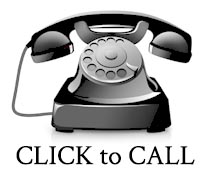For centuries, tarot cards have actually been utilized as a device for divination, providing insights and assistance on different elements of life. Each card in the free astrology readings deck carries its very own distinct meaning and definition, making the tarot an effective device for self-reflection and individual growth.
History of Tarot Cards
The origins of tarot card cards are shrouded in enigma, with some historians tracing their roots back to ancient Egypt or China. Nevertheless, the modern tarot deck as we understand it today came from Europe in the 15th century, where it was used for playing card games prior to advancing right into a device for spiritual and emotional exploration.
It wasn’t until the late 18th century that tarot cards were initially utilized for divination, with oranum psychics review the publication of the Tarot de Marseille deck in France. Since then, the tarot has come to be a prominent tool for psychics, specialists, and people looking for advice and insight.
Today, there are thousands of different tarot decks available, each with its own one-of-a-kind artwork and meaning. Nevertheless, most decks are based on the standard 78-card tarot card deck, which is divided right into two main categories: the Major Arcana and the Minor Arcana.
- The Major Arcana consists of 22 cards that represent substantial life occasions and spiritual lessons.
- The Minor Arcana consists of 56 cards that are divided into 4 suits: Wands, Cups, Swords, and Pentacles. Each fit stands for a various element of life, such as creative thinking, feelings, intellect, and product properties.
Exactly How to Check Out Tarot Card Cards
Reviewing tarot card cards is a skill that takes time and practice to create. While there are many different ways to analyze the cards, a lot of fortune-tellers utilize a mix of instinct, symbolism, and typical definitions to offer insights and guidance.
When conducting a tarot analysis, the viewers will typically shuffle the cards and lay them out in a certain pattern, known as a spread. Each card in the spread stands for a different aspect of the concern or circumstance being resolved, enabling the reader to gain understandings right into the past, present, and future.
It is very important to remember that tarot cards are not a magical solution to your problems, but rather a device for self-reflection and self-questioning. By using the cards to discover your thoughts and feelings, you can acquire a much deeper understanding of yourself and your conditions.
Translating the Cards
Each tarot card in the deck has its own distinct importance and meaning, which can vary relying on the context of the reading and the individual analyzing the cards. Nevertheless, there are some typical analyses that are widely accepted among fortuneteller:
- The Fool: Represents clean slates, spontaneity, and virtue.
- The Illusionist: Represents indication, creativity, and willpower.
- The High Priestess: Represents instinct, mystery, and internal wisdom.
- The Empress: Stands for nurturing, wealth, and fertility.
- The Emperor: Stands for authority, structure, and control.
- The Lovers: Represents collaborations, connections, and options.
Verdict
Whether you’re a seasoned fortune-teller or simply beginning your trip with the cards, there is much to be picked up from the wisdom and importance of the tarot deck. By discovering the meanings of each card and exercising your intuition, you can open the tricks of the tarot and gain valuable insights into your life and the globe around you.



